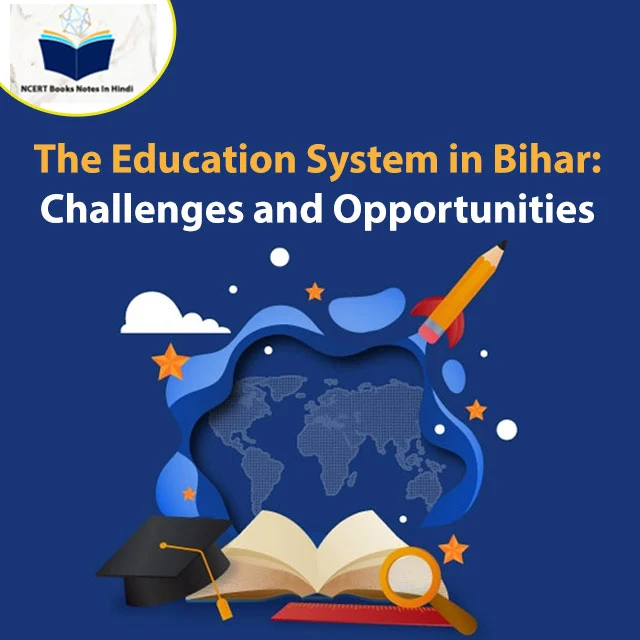Introduction:
The education system plays a vital role in shaping the future of any society. In Bihar, a state located in eastern India, the education sector has faced numerous challenges over the years. However, amidst these challenges, there are also opportunities for growth and improvement. This article explores the key challenges faced by the education system in Bihar and highlights potential opportunities that can help transform the landscape of education in the state.
Poor Infrastructure:
One of the major challenges in Bihar's education system is the lack of adequate infrastructure in schools and colleges. Many educational institutions suffer from a lack of proper classrooms, libraries, laboratories, and basic amenities such as clean drinking water and sanitation facilities. Addressing this infrastructure deficit is crucial to creating an environment conducive to learning and quality education.
Opportunity: Government initiatives to improve infrastructure:
The Government of Bihar has initiated various schemes to improve infrastructure in schools and colleges. Programs like "Bihar Education Infrastructure Development Corporation" (BEIDC) aim to construct new school buildings, repair existing infrastructure, and provide essential facilities. Collaboration with private entities, NGOs, and community involvement can further enhance these efforts.
Low Enrollment and High Dropout Rates:
Bihar struggles with low enrollment rates, especially in rural areas, due to factors such as poverty, lack of awareness, and gender disparity. Additionally, high dropout rates pose a significant challenge, with students leaving schools early due to financial constraints, family responsibilities, or limited access to quality education.
Opportunity: Focus on inclusive and accessible education:
To address low enrollment and high dropout rates, Bihar needs to focus on inclusive education that reaches marginalized communities and provides equal opportunities for all. Initiatives such as scholarships, mid-day meal programs, and awareness campaigns can help incentivize enrollment and encourage students to complete their education.
Quality of Education:
Ensuring quality education is crucial for the holistic development of students. Bihar faces challenges in terms of teacher shortages, inadequate training, and outdated teaching methods. These factors impact the overall quality of education and hinder students' ability to compete at a national and global level.
Opportunity: Teacher training and curriculum development:
Investing in teacher training programs is vital to improving the quality of education. Encouraging professional development, providing access to modern teaching methods, and incorporating technology into classrooms can enhance the learning experience. Additionally, updating the curriculum to align with industry needs and incorporating practical, skill-based education can equip students for the job market.
Digital Divide:
Access to technology and digital resources remains a significant challenge in Bihar. Many students lack access to computers, the internet, and online educational content. The digital divide further widens the gap between urban and rural areas and limits educational opportunities for disadvantaged students.
Opportunity: Digital literacy and infrastructure development:
Promoting digital literacy among students and teachers is crucial in bridging the digital divide. The government and educational institutions should work together to provide internet connectivity, computer labs, and access to e-learning platforms. Collaborations with private organizations and NGOs can help accelerate the adoption of digital technologies in education.
Conclusion:
The education system in Bihar faces several challenges, including poor infrastructure, low enrollment rates, quality concerns, and the digital divide. However, these challenges also present opportunities for growth and improvement. By addressing these issues and leveraging initiatives such as infrastructure development, inclusive education, teacher training, and digital literacy, Bihar can transform its education system. A strong commitment from the government, active community participation, and collaboration with relevant stakeholders will be key to realizing the full potential of education and nurturing the future leaders of Bihar.
The Education System in Bihar FAQs:
What is the literacy rate in Bihar?
The literacy rate in Bihar has been steadily improving over the years. As of the latest data available, the literacy rate in Bihar is around 63.82%. This indicates that a significant portion of the population in Bihar has acquired basic reading and writing skills.
How does the primary education system function in Bihar?
The primary education system in Bihar operates through government-run schools as well as private institutions. The government has taken initiatives to improve the infrastructure and quality of education in primary schools. Children aged 6 to 14 must attend school, as per the Right to Education Act.
Are there any initiatives to promote female education in Bihar?
Yes, Bihar has implemented several initiatives to promote female education. These include schemes that provide financial incentives to families for sending their daughters to school, the establishment of girls' schools, and efforts to raise awareness about the importance of education for girls. These initiatives aim to bridge the gender gap in education and empower girls in Bihar.
What are the challenges faced by the education system in Bihar?
The education system in Bihar faces various challenges, including inadequate infrastructure, a shortage of trained teachers, high dropout rates, and a lack of quality educational resources. The state government is working towards addressing these challenges through policy reforms and increased investments in the education sector.
How is higher education in Bihar structured?
Higher education in Bihar is primarily offered through universities and colleges. The state has several universities, including central universities, state universities, and deemed universities. These institutions offer a wide range of undergraduate and postgraduate courses in various fields of study.
What is the status of technical education in Bihar?
Bihar has made significant progress in the field of technical education. The state has several technical institutions, including engineering colleges, polytechnic institutes, and industrial training institutes (ITIs). These institutions provide technical skills and knowledge to students, preparing them for careers in engineering, technology, and other technical fields.
Are there any scholarships available for students in Bihar?
Yes, there are scholarships available for students in Bihar. The state government, as well as the central government, provide scholarships to meritorious students belonging to economically weaker sections. These scholarships aim to support students in pursuing their education and reducing the financial burden on their families.
How is vocational education promoted in Bihar?
Vocational education is actively promoted in Bihar through vocational training institutes and skill development programs. These initiatives aim to equip students with practical skills and make them job-ready. Vocational education covers a wide range of fields, including agriculture, healthcare, hospitality, and information technology.
What measures have been taken to improve the quality of education in Bihar?
The government of Bihar has implemented several measures to enhance the quality of education in the state. This includes teacher training programs, curriculum reforms, the use of technology in classrooms, and the establishment of model schools. Efforts are also being made to improve the monitoring and evaluation mechanisms to ensure accountability and transparency in the education system.
How does the government address the issue of school dropouts in Bihar?
The government of Bihar has taken various steps to address the issue of school dropouts. This includes the implementation of schemes that incentivize students to continue their education, awareness campaigns to highlight the benefits of education, and the provision of mid-day meals in schools to attract and retain students. Efforts are also being made to improve the quality of education to make it more engaging and relevant to students' lives.


